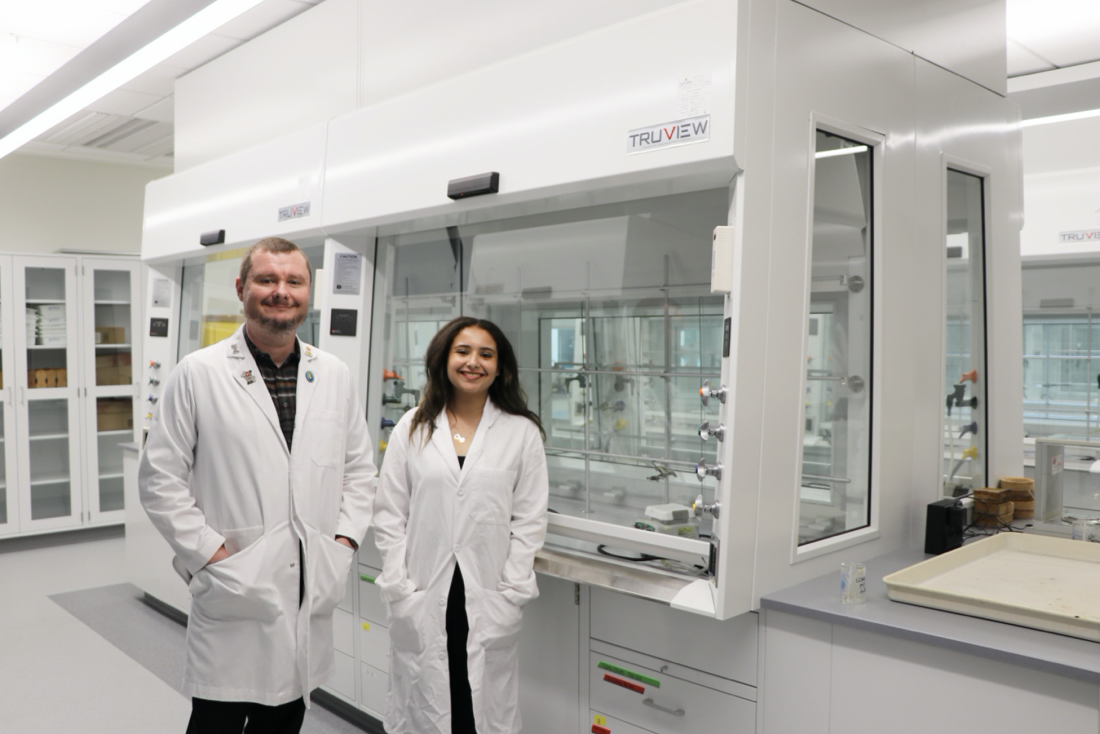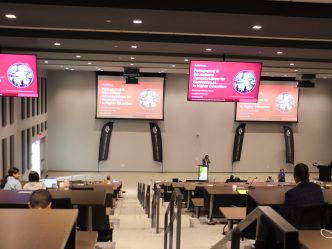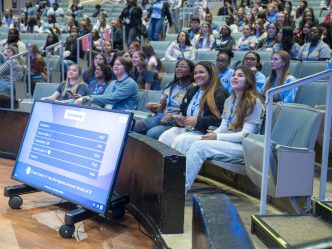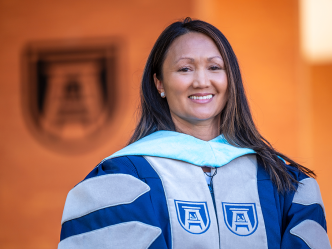A student and faculty pair from Augusta University’s College of Science and Mathematics is finding success with their research on a “greener” method to produce consumer goods.
Amina Aly, a senior studying cell and molecular biology, was recently invited to present her research virtually with Dr. Brian Agee, lecturer in chemistry, at the fall 2021 national meeting of the American Chemical Society. An ACS article was published about their research, and they were even selected to participate in a media briefing to discuss their presentation.
But this is just the beginning of their project.
About Amina Aly
Aly was born in Cairo, but has moved almost 30 times since immigrating to the U.S. with her family. She chose Augusta University because, at an early age, she knew she wanted to go into medicine.
“I thought, what else is better than going to the home of the Medical College of Georgia?” she said.
Aly has had extensive experience in research while at Augusta University, starting her sophomore year. She was in a research group on the Health Sciences Campus in 2019, working on the use of different drugs for Alzheimer’s disease.
After taking Agee’s organic chemistry lab and lecture courses in the spring of 2020, Aly found her passion in chemistry. She was in awe after experiencing many chemical reactions and studying the concepts behind them.
Following her interest in the subject, she consulted with the Center for Undergraduate Research and Scholarship (CURS) and reached out to Agee to express her interest in joining his lab in fall 2020. Aly is doing her research for credit in CHEM 3990 and as part of the requirement for her thesis in the Honors Program.
About Dr. Brian Agee
Agee has been teaching chemistry at Augusta University for the past six years. One of his many research topics focuses on making organic chemistry reactions more environmentally friendly by using benign reagents that are easily obtainable from natural sources in underdeveloped countries.
“I also like taking reactions that we could potentially use in a laboratory and then modifying them to be more green as well, so that we as faculty here, in our teaching labs, don’t generate as much waste,” he said.
Research on substituting zinc
This research came about when Agee was looking for experiments that he could do in the organic chemistry lab. In the Journal of Chemical Education, he came across a lab where experimenters synthesized nylon essentially from the ground up. They were already using green resources.
“I keep a list of endangered elements. I saw they were using zinc, and that’s a limited resource. We can change that,” Agee said. “We can still make good strides at trying to limit the use of zinc in chemical reactions.”
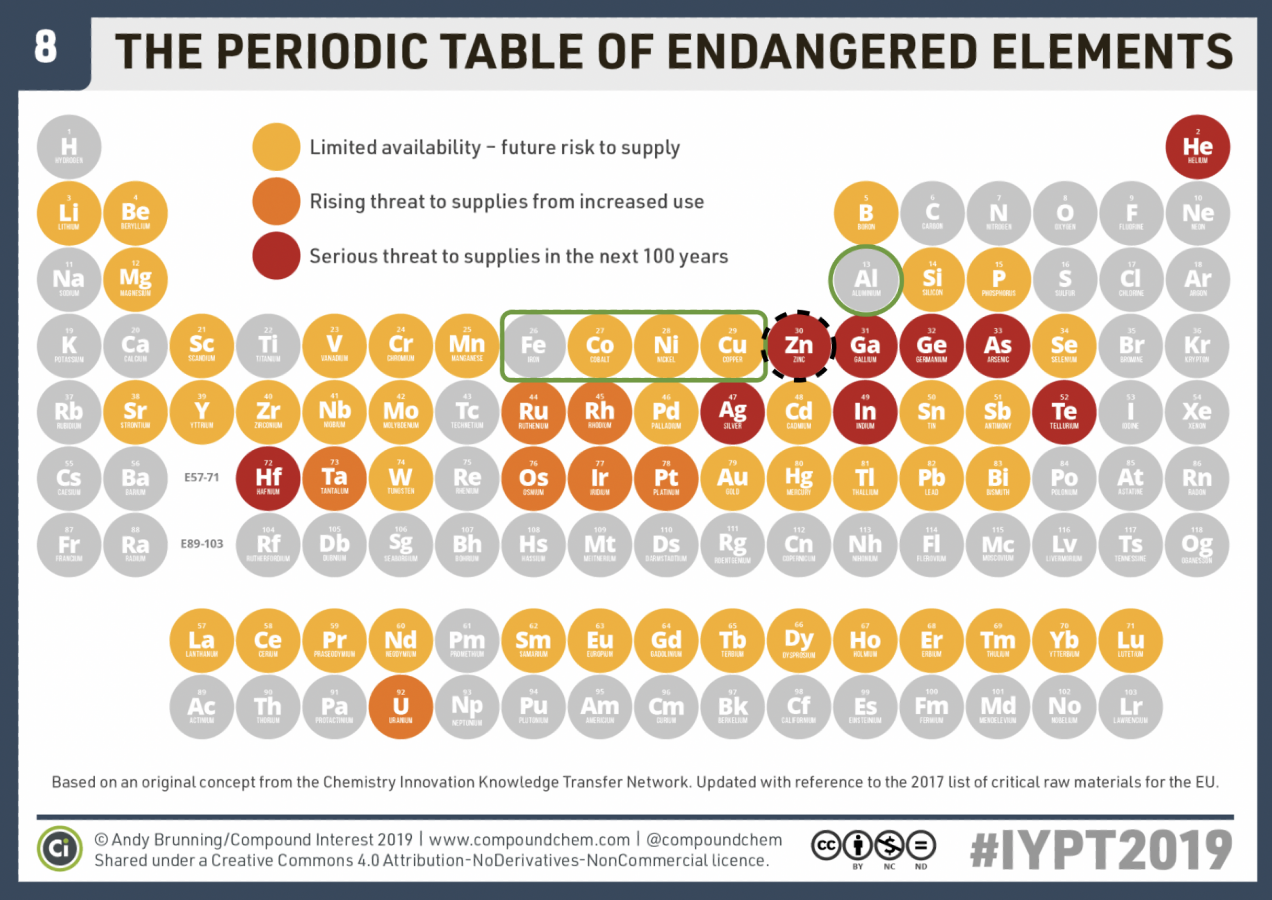
Furthermore, zinc is toxic to aquatic life as it can kill fish by destroying gill tissues. It can also cause illness in humans, and requires experimenters to perform a lengthy process to properly dispose of it, according to Aly.
The duo identified a few substitute elements, including iron and copper.
“Usually, if elements have similar numbers in valence electrons, which are that outermost shell, they’ll have similar properties. And the closer together they are on the table, the more similar those properties will be.”
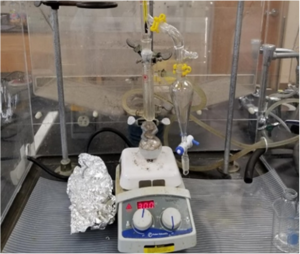
Agee and Aly conducted three trials of each element, using both inside and outside set-ups.
“So far, we’ve tested zinc and iron, and we compared the results from them. When zinc is used inside in its traditional fashion, it produces 80 percent yield, which means that from the total expected amount we plan to get, if everything goes perfectly, 80 percent. That’s a really high yield for most cases.”
“And then when we tried iron outside, we got about 78 percent. And that’s super competitive.” Aly was happy to see the result because she believes that iron is a viable candidate to substitute for zinc.
“Some of the other things that I thought weren’t working, Amina got them to work,” Agee said. “In the past, there were a few other students who worked on this experiment. But Amina took this project and truly made it her own.”
Challenges in the research
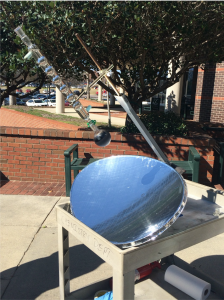
Aly and Agee faced disruption from the COVID-19 pandemic. The campus was closed shortly before midterm in spring of 2020. The continual closure of labs forced them to postpone their research from the fall of 2020 to the spring of 2021.
Another impact caused by COVID-19 was imbalance in the laboratory supply chain. Even as labs reopened, they weren’t able to procure many materials for the trials due to the supply shortage, such as the condenser and the element candidates to substitute zinc.
The duo overcame these challenges by using materials they already had available during COVID-induced supply shortages. Aly also used the downtime when the lab was closed to read into other scientific literature, which is how she identified ferric oxide, commonly known as rust, as a potential candidate for this experiment. It had been used as a reducing agent, she learned, for other reactions.
Even during the actual experiment, Aly faced a challenge for her outdoor set-up as it relied on sunny weather. Aly set up her lab to target cloudy or rainy days to perform the indoor experiment and sunny days for her outdoor experiment.
They faced another challenge when the College of Science and Mathematics relocated to a new building over the summer. Labs were shut down around the first week of July. But as the move to the new building was completed prior to the fall 2021 semester, Agee and Aly are starting up their experiments again.
“It’s an interesting experience; it’s a fun experience of trying to work around things,” Aly said.
A look into the future
Aly is looking to conduct trials for other substitute materials, such as rust, in the fall of 2021 in the new College of Science and Mathematics building.
Regardless whether rust works or not, Agee believes that Aly is ready to submit the manuscript for publication because iron has shown to be a suitable replacement for zinc. And iron is nowhere near being an endangered element on earth.
“Amina has accomplished a lot. I’m very, very proud of her,” Agee said.
Aly and Agee are planning on presenting their findings from the trials with rust at the next ACS national conference in San Diego. The call for abstracts is currently open, and they will submit another proposal. They will apply for funding to help with travel costs to present their new findings. Both the College of Science and Mathematics and CURS make funding available to support student research.
“It has been great being Dr. Agee’s research student. He’s very hands-on with his mentorship. He helps me realize my mistakes without tearing me down. Not a lot of people can do that,” Aly said. “He’s just been amazing with helping me getting into research, being comfortable with it, and just increasing my confidence in the lab and my presentation skills.”
Aly anticipates graduating in the spring of 2022 and is submitting applications to medical school with a goal to become a pediatric surgeon. She aspires to practice in rural areas that don’t have ready access to health care.
 Augusta University
Augusta University
